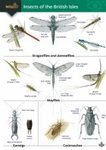![Insect Conservation in Australia Insect Conservation in Australia]()
Click to have a closer look
About this book
Contents
Customer reviews
Biography
Related titles
About this book
The fundamental ecological, cultural and economic roles of insects give them central importance in the functioning of terrestrial and inland water ecosystems worldwide. Insect declines, from a variety of anthropogenic threats, erode these services and dictate the need for insect conservation, but the consequences of insect losses are poorly recognised. In Australia, insect conservation must proceed from a very uncertain and incomplete knowledge of insect identifications and diversity, and also from a generally poor public appreciation of their central ecological roles and relevance to human welfare and other biota. These impediments occupy much of this book, in which cases of insect conservation across the world are used to provide lessons for Australia. Here, a combination of large numbers of insect species and small numbers of entomologists and citizen participants necessitates a clear appreciation of insect importance and focused conservation priorities. Low public sympathy and inadequate scientific information can hinder progress because uncertainty, imprecision and ignorance are difficult to explain to policymakers and funding agencies whose interest and support may be pivotal. Understanding and overcoming those impediments is a vital component of insect conservation.
This book is intended as an introduction to the needs, rationale and practice of insect conservation in Australia for students in conservation biology, managers and other concerned people who are not specialists in entomology. The daunting variety and complexity of insect life may deter their involvement, so, to that end, an Appendix that offers aid to recognising insect orders is included. The text is based on the conservation needs of Australia's insects and shows how progress necessitates effective communication, clear priorities, and plans for action within a realistic and practical framework of aims and needs for practical conservation. A suggested 'Agenda' for advancing insect conservation in Australia encompasses many of these needs and activities.
Contents
Chapter 1. Insect diversity, distribution and abundance
Chapter 2. Insect declines
Chapter 3. Causes of concern: the main threats to insects
Chapter 4. Consequences of insect declines and losses
Chapter 5. Human perceptions of insects
Chapter 6. The reasons for insect conservation
Chapter 7. Need for understanding and conservation
Chapter 8. Involving the wider community
Chapter 9. Towards an agenda for insect conservation in Australia
Customer Reviews
Biography
Prof. Tim New is an entomologist with broad interests in systematics, ecology and conservation, and has published extensively in these areas. He is acknowledged widely as a leading advocate for insect conservation, and his books include several dealing with insect conservation in Australia. He is a past Editor-in-Chief of the Journal of Insect Conservation and past Regional Editor of Biological Conservation and has received several prestigious awards for his insect conservation work.



































